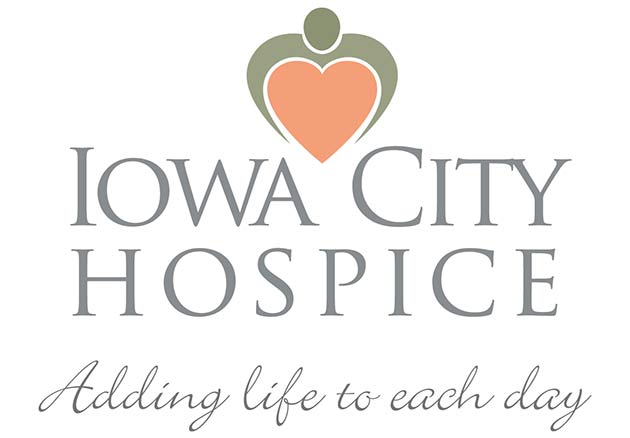Family Caregiver Connection
Helpful tips for family caregivers
May/June 2014
Balance… we all need it to be healthy. Whether it’s your own balance of work and family life or your loved one’s physical balance, there are serious consequences if you ignore the topic. In this newsletter, we also look at what to do with medicines that are no longer being used.
Balance problems
Balance problems affect about 40% of older adults. Poor balance increases a person’s risk of falling. And fall-related injuries often result in an elder having to move to a living situation that provides more supportive care.
A person with good balance can stand, walk, sit, and change position while easily staying upright. Without even thinking about it! It requires excellent coordination between the muscles and the senses (eyes, ears, and touch). The senses tell the brain about a body’s orientation in space. The brain then tells the limbs, muscles, and joints what to do.
If your relative seems to struggle with balance, he or she may be experiencing
- vertigo, when everything seems to be spinning;
- dizziness, a sensation of weakness or lightheadedness; or
- disorientation, with feelings of unsteadiness.
Imbalance can result from any of these health conditions:
- inner ear problems
- eye and vision problems
- diseases of the nerves in the feet and legs
- arthritis
- diabetes
- heart or blood circulation problems (including sudden low blood pressure)
- chronic diseases of the nervous system (such as Parkinson’s and Alzheimer’s diseases)
- anxiety disorders
Or the source of the problem may be more immediate. Poor balance can be a medication side effect or result from dehydration. (Many older adults limit water intake because they are concerned about incontinence. But that puts their balance in jeopardy!)
If your relative’s balance seems to have changed, don’t assume “it’s just old age.” Make an appointment with the doctor. The symptoms may indicate a serious condition, which the doctor can then treat. Or simple changes may help improve input from the eyes, ears, or feet. For example, new eyeglasses, or hearing aids. Or even new shoes. The doctor may also recommend specific types of exercise, dietary adjustments, or an assistive device, such as a cane or walker.
Return to top
Cleaning out the medicine cabinet
It’s good news when your loved one can switch to a lower dose of a drug or quit a medication altogether. But what should you do with the unwanted pills, patches, or inhalers? Children and pets need to be protected from potentially fatal exposure. Yet chucking everything into the toilet is not recommended.
Read the label for instructions. Some drugs bear special instructions for disposal. For instance, the label may state if the drug is approved for flushing down the toilet. Sometimes the danger of the drug, such as an opioid, makes this the preferred method. But unless the label says it’s okay, do NOT flush!
Ask your local pharmacist. Some pharmacies provide a drug-disposal service. Or, your pharmacist may direct you to a community drug-take-back program.
Check with your local trash hauler. Trash haulers are up to date on local laws and regulations concerning medication disposal. For instance, inhalers, because of their propellants, can be dangerous if punctured or thrown in a fire. Your trash hauler can likely advise you of nearby take-back programs.
Follow these steps to safely dispose of meds at home.
- Dirty the drugs. Take the medication out of its original container. Mix it with an unappealing substance, such as coffee grounds or kitty litter. In other words, disguise the drug’s appearance and make it unattractive to children or pets. Do NOT crush tablets or capsules.
- Seal the drugs. Put the mixed preparation in a lidded container or sealable bag and put the container in the garbage.
- Change the label. Disfigure the label on the empty bottle so that personal information is no longer readable.
Use these guidelines for disposal of over-the-counter drugs, too!
Your actions protect people and pets from accidental harm and help combat street use of prescription drugs.
Return to top
Take fifteen!
As much as you’d like to take a break for an hour or two, sometimes it’s just not possible. But it is crucial that you take time to de-stress. If not for yourself, then do it for the person you care for. After all, if you burn out, what will happen to him or her?
There are many ways to refresh quickly. First, put aside the day’s tasks and find a quiet space where you won’t be disturbed. Silence the phone and set a timer for 15 minutes. Breathe easily and surrender completely to the exercise until the timer goes off.
Care for your body
- Massage your face. Start at the top of your head and work down, releasing tension in each of your many facial muscles.
- Catnap. Stretch out and close your eyes. Sleep research actually recommends 20 minutes over 15.
- Stretch. Use stretches or postures that you know. Linger in each position. But keep it comfortable.
Ease your mind
- Count down. Sit with good back support. Inhale slowly, feeling your belly expand. Exhale, saying silently “10.” Repeat, counting down to one. Repeat until time is up.
- Imagine. Think of a favorite restful place in nature. Call to mind the sights, sounds, smells, and sensations of the place. Place yourself there, in the midst of all those pleasures. Ah!
- Savor the good. Keep a “gratitude journal,” noting each day the positives in your life. For example, acknowledge a task you did well, or savor again something nice that happened.
Reflect for a moment
- Pray/meditate. Give full attention to connecting with your religious or spiritual self.
- Read for inspiration. Pick up that peaceful book that’s been beckoning to you. Read it thoughtfully, a few pages at a time.
- Gaze on beauty. Contemplate a flower in a vase, a sunset, or some other wonder of nature.
Return to top

